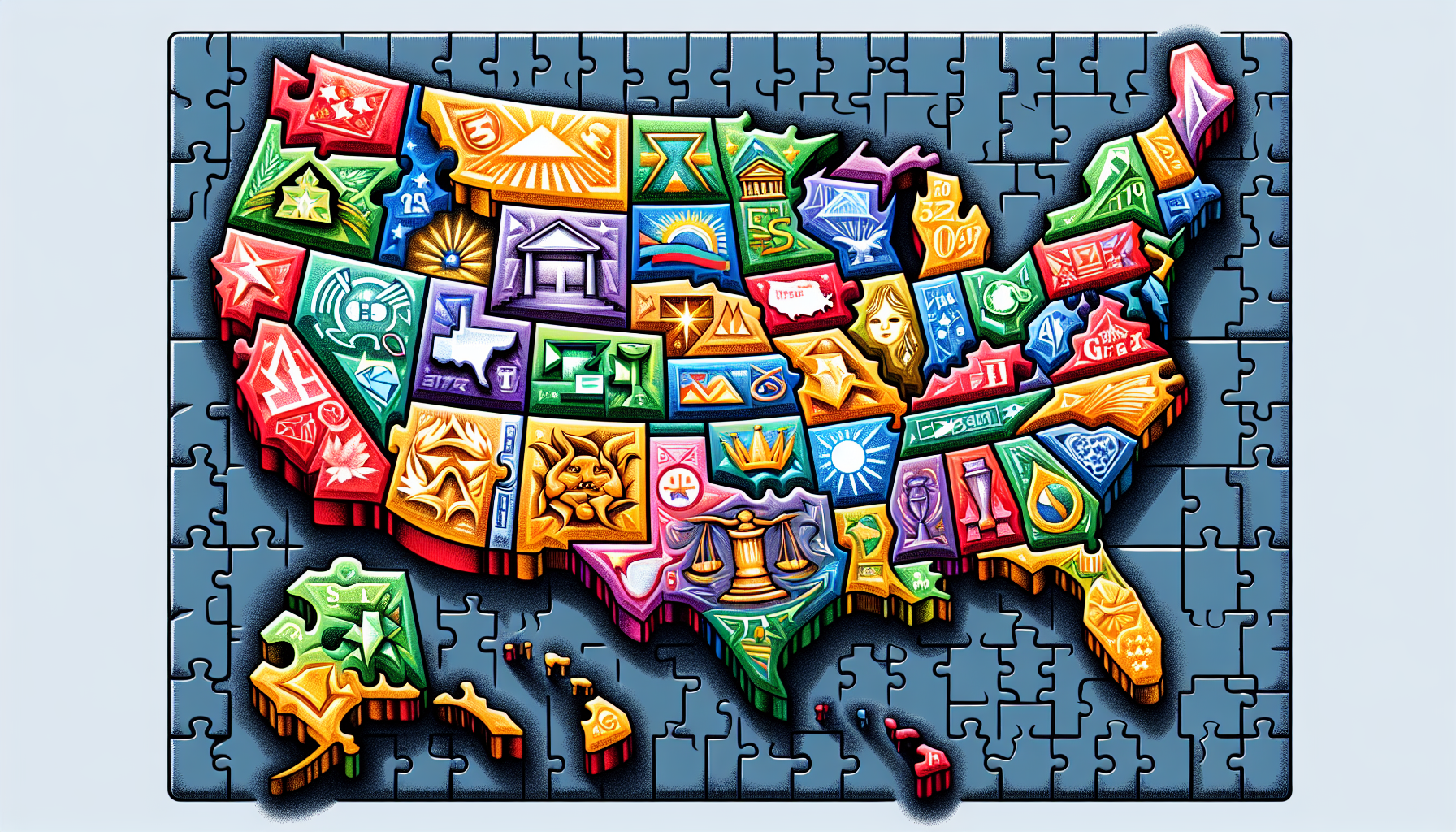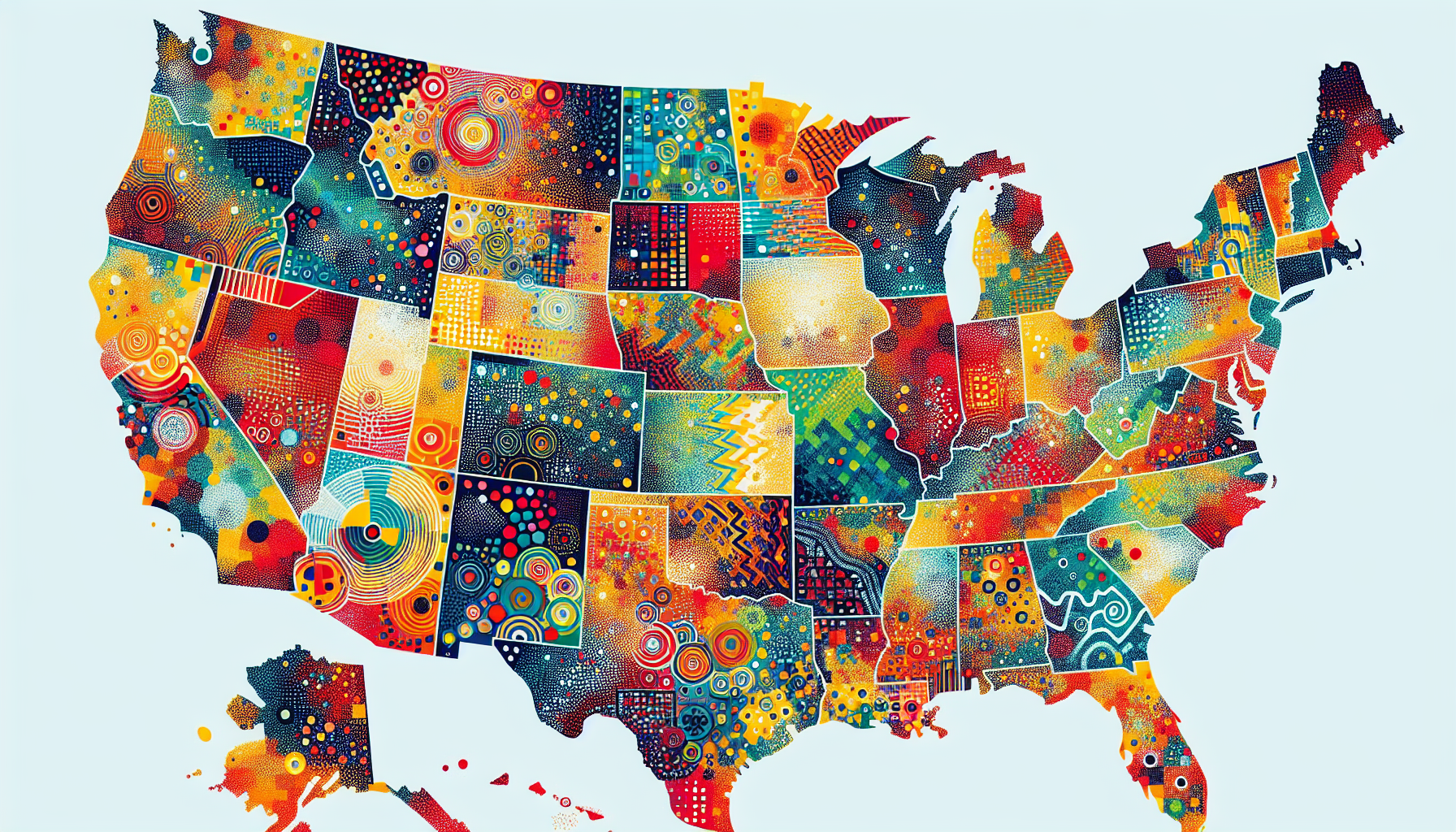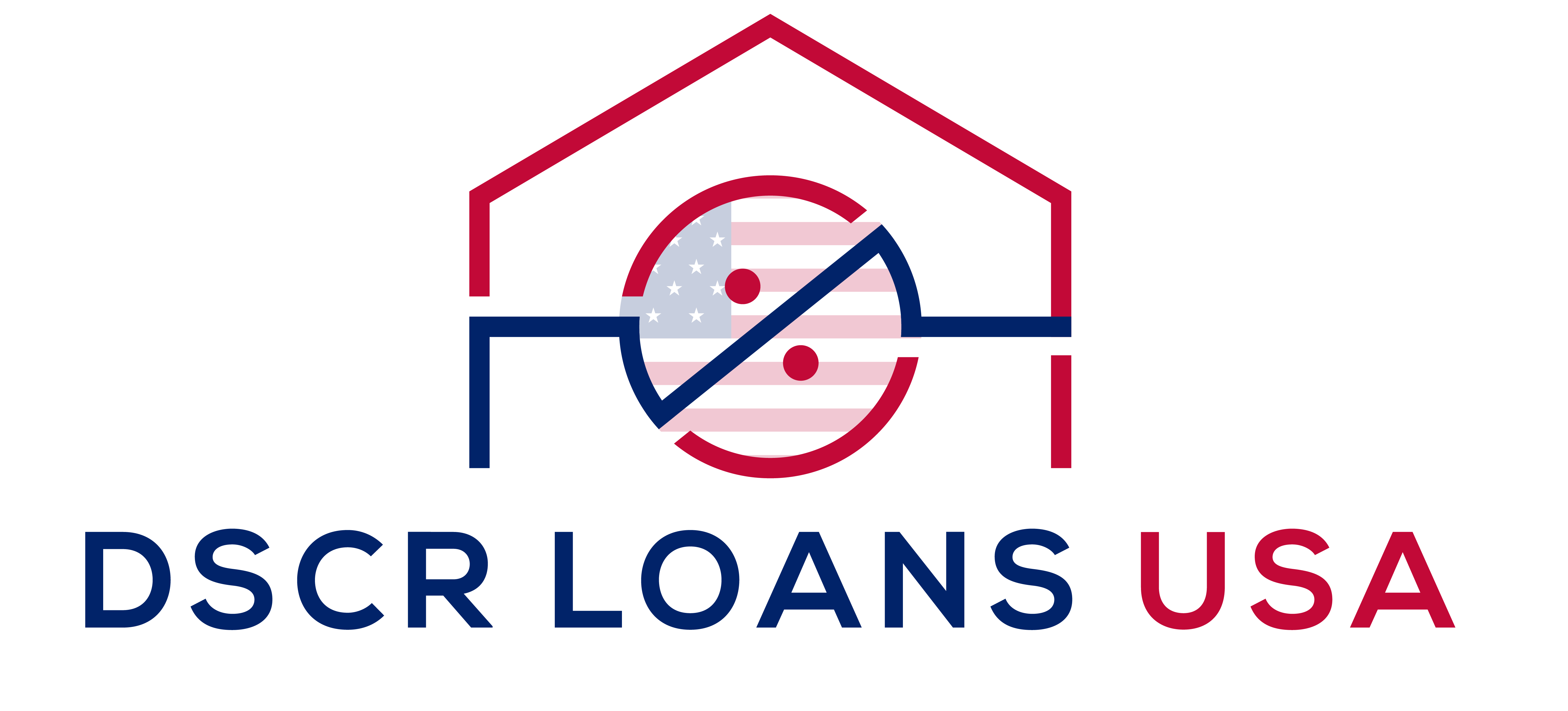Curious about the best states for real estate investing in 2024?
Our latest rankings, “50 States Ranked Best to Worst in 2024,” focus on crucial factors such as economic stability, quality of life, and educational opportunities—key indicators influencing real estate markets.
Related: 1o Cheapest States to Buy Land in 2024
This straightforward guide is essential for investors looking to identify properties that qualify for DSCR loans. It offers direct insights into which states offer the most promising investment opportunities. Understand what makes a state an ideal choice for your real estate portfolio and how these factors impact the viability of securing favorable financing for multiple properties.
Key Takeaways
- The state rankings are based on a thorough analysis of affordability, economy, education, health, quality of life, and safety, using 71 metrics, including income levels, education rates, and crime rates.
- Quality of life, economic opportunity, and the quality of education and healthcare systems are fundamental factors that significantly influence a state’s ranking.
- Various factors such as crime rates, economic stability, infrastructure quality, demographic trends, and cultural heritage play critical roles in the overall prosperity and livability rankings of the states.
Methodology: Ranking the 50 States

Our ranks do not come out of thin air. They are the result of meticulous evaluation across a range of crucial categories. We examined five key aspects: affordability, economy, education and health, quality of life, and safety. Within these categories, we used 71 detailed metrics such as average income, commute time, work hours per week, unemployment rates, childcare and college costs, graduation rates, life expectancy, and several types of crime rates.
We also looked at housing market indicators and affordability. The relative rank of each state was determined based on its comparative performance in each category, with quality of life metrics like safety, health, and economy playing a significant role.
Quality of Life
Quality of life is a multi-faceted term, and we’ve endeavored to capture its essence in our ranking. We evaluated U.S. states through a variety of metrics, including:
- Life expectancy
- Cost-of-living adjusted income
- Leisure time
- Educational attainment
- Inequality of consumption
Some states, like New Hampshire, Maine, and New Jersey, are recognized for their safety, which has positively impacted their rankings. However, issues of inclusiveness in states like Tennessee, Florida, and Texas have affected their quality of life rankings adversely. The infrastructure of services like healthcare also heavily influences the quality of life across the states.
Economic Opportunity
Economic opportunity is another vital factor in our state rankings. States fostering technological industries and service sectors, such as Indiana, display higher economic growth and job opportunities. Unemployment rates, varying from as low as 2.0% in North Dakota to 5.2% in the District of Columbia, are critical indicators of economic opportunity and directly influence state rankings.
However, some states like Mississippi, with the nation’s lowest per capita income, and Alaska, with the highest violent crime rates and high crime rates due to an economy heavily impacted by oil and tourism declines, suffer due to these factors, highlighting how the cost of living and security affect economic perspectives.
Education and Healthcare
Education and healthcare are the backbone of any thriving society, and their quality profoundly impacts state rankings. States with lower rankings, such as Oklahoma, Arkansas, Mississippi, and Alabama frequently experience healthcare access issues and poor healthcare quality. This leads to various health concerns like high rates of drug abuse, obesity, and chronic diseases. Similarly, educational challenges, such as low public school performance and low educational attainment, are marked characteristics of states like New Mexico and South Carolina, contributing to their poor rankings.
Thus, achieving a balance between accessible, high-quality health care and robust educational systems is integral to improving the overall ranking of a state.
The Top 10 Best States in 2024

Now that we’ve discussed our methodology, let’s dive into the results. Here, we present the crème de la crème, the top 10 best states to live in 2024. These states are dynamic and can vary in their rankings from year to year. The top 10 best states to live in 2024 are:
- Vermont
- Maine
- New Jersey
- New Hampshire
- New York
- Wyoming
- Massachusetts
- Idaho
- Vermont
- Florida
These states have been chosen based on factors such as environmental quality, inclusiveness, and overall livability. It’s important to note that rankings can change over time, so it’s always a good idea to stay updated on the latest information.
So, without further ado, let’s explore these states in more detail.
State #1 (Best)
Utah, the Beehive State, is buzzing with reasons that make it the best state overall in 2024. Known for its stunning geography, Utah boasts mountains, high plateaus, and deserts that are nothing short of breathtaking. But the state’s allure doesn’t stop at its natural beauty.
It’s also home to key cultural attractions in South Dakota. The Sundance Film Festival and renowned ski destinations attract visitors from around the world, adding a vibrant cultural layer to the state’s appeal.
State #2
The second-best state to live in has a robust economy and job market, which contributed to its high ranking. A superior public services system, particularly in education and healthcare, has positively impacted its overall performance. But it’s not just about the economy and public services.
This state offers a rich cultural diversity and a blend of urban and natural attractions that make it a highly sought-after location. Its balance of economic, educational, and cultural strengths ensures its spot as one of the top places to live in 2024.
State #3
Coming in at third place is Idaho, a state renowned for its:
- vast landscapes
- agricultural richness
- high-quality potatoes
- rich history in gold mining, which played a significant role in its economic development.
Tourism is another feather in its cap, bolstered by Idaho’s resorts, which are integral to the state’s notable achievements and high ranking.
State #4
Our fourth-best state is a shining example of robust economic growth, reflected in its above-average GDP figures. It has a low unemployment rate compared to the national average, indicating a strong job market. The state also boasts high rates of high school completion and a significant number of degree-holders in STEM fields, adding to its appeal. This success can be seen in the thriving state capital, which serves as a hub for innovation and opportunity.
Research and development in public and private institutions position it as a leader in innovation. The state has made considerable efforts to improve healthcare access, with a focus on expanding rural healthcare services. Furthermore, its environmental policies have led to the reduction of carbon emissions and an increase in renewable energy usage, emphasizing its commitment to sustainability.
State #5
Cultural significance and unique attractions are a notable feature in our fifth-best state’s high ranking. It’s not just about the numbers and statistics, but the flavor of the state – quite literally! The state’s barbecue is considered the best thing about Missouri, indicating an exceptional culinary scene that contributes to its allure.
State #6
The sixth-best state is a testament to the power of culture. Its vibrancy significantly enhanced its ranking in terms of cultural and recreational attractions. Its history, its music scene, and stunning scenery have all played a part in making it a desirable place to live.
The state’s tourism destinations, such as Pigeon Forge, Gatlinburg, and Mount Rainier, have further added to its appeal.
State #7
The seventh spot goes to a state that has developed a strong leisure and tourism industry as one of its main successes. Its coastline is particularly appealing, featuring numerous beach towns, widely accessible resorts, and renowned golf courses. These features not only attract tourists but also make it a great place for residents to live and work.
State #8
The eighth-best state is a beacon of resilience. Despite facing significant economic, educational, and infrastructure challenges, it has managed to secure a spot in the top 10 best and worst states. Although it has one of the highest unemployment rates in the country, it also shows potential for economic revitalization and improved state rankings through new technology start-ups and investment in education, much like climbing to the highest peak.
State #9
Vermont, the Green Mountain State, ranks as the ninth-best state on our list. This state is celebrated for its production of maple syrup and hosting dairy industries such as the iconic Ben & Jerry’s Ice Cream. Vermont’s lush landscapes, including the beautiful Lake Champlain, add to the state’s overall appeal, attracting residents and visitors alike.
Its rich revolutionary history further contributes to its noteworthy characteristics.
State #10
Rounding out the top 10 is the Sunshine State, Florida. Florida is recognized for its diverse and robust economic contributions. From a thriving tourism industry to bountiful agricultural outputs, the state has a lot to offer.
A significant factor enhancing its attractiveness and living standards is the absence of a state personal income tax. Furthermore, Florida’s extensive higher education system is a significant asset that contributes to the development of a skilled workforce and supports the state’s high ranking.
The Bottom 10 Worst States in 2024

Now that we’ve celebrated the top performers, it’s time to turn our attention to the states at the opposite end of the spectrum. While these states face significant challenges, it’s important to remember that these rankings are not set in stone. Improvement is always possible, and understanding the issues is the first step towards making positive changes.
So, let’s take a look at the bottom 10 states to live in 2024.
State #41
The 41st state, while not at the very bottom, still faces challenges. Its landscape, predominantly flat and featuring extensive cornfields, may lack geographical diversity. This can be perceived as a downside in terms of aesthetic variety and tourist appeal. However, this state’s ranking is not a condemnation but a call to action. There are always opportunities for improvement and growth.
State #42
State 42 faces several weaknesses that justify its low ranking. However, it’s vital to remember that rankings are not static. They can change, and improvement is always possible.
By addressing these issues, this state can improve its ranking in future years and enhance the quality of life for its residents.
State #43
The challenges facing the 43rd state are considerable. High unemployment rates, a declining manufacturing sector, and lower than average educational attainment levels are all factors that have led to its low ranking. However, the silver lining here is that identifying these issues is the first step towards improvement.
By addressing these challenges, there is potential for this state to climb up the rankings in future years.
State #44
State 44 also faces significant challenges that impact its ranking. A struggling economy, poor educational performance, and deteriorating infrastructure are among the key issues that need to be addressed.
However, with focused efforts and strategic investment, there’s always the potential for improvement, and this state could rise in the rankings in future years.
State #45
The 45th state’s challenges are multifaceted, involving a declining manufacturing sector and a net population decline. These issues have removed a critical mass of economic contributors and consumers, exacerbating the state’s economic struggles.
Addressing these challenges will require strategic planning and investment, but with the right approach, this state has the potential to improve its ranking in the future.
State #46
Ranked 46th is a state where the weather plays a significant role in its quality of life. The constant rainfall can be a damper for those who prefer more sunny days, impacting its overall appeal. However, this is just one aspect of what makes a state desirable, and there are many other factors at play in determining a state’s ranking.
State #47
The 47th state faces significant challenges in terms of crime and education, which have led to its low ranking. However, it’s important to remember that these challenges aren’t insurmountable. With the right resources, commitment, and strategies in place, there’s potential for improvement in these areas, which could lead to a better ranking in the future.
State #48
State 48 faces significant challenges that have led to its low ranking. From high unemployment rates to a reliance on non-renewable resources, this state has a range of issues to address. However, it’s also important to note the state’s potential for economic revitalization and improved rankings through new technology start-ups and investment in education.
These positive initiatives show that there’s always room for improvement, even in the states that are currently struggling the most.
State #49
The 49th state faces significant challenges that contribute to its struggle and hinder its progress. However, these challenges are not insurmountable. With the right strategies, resources, and commitment, this state has the potential to overcome these challenges and improve its ranking in the future.
State #50 (Worst)
Rounding out the list at the 50th spot is Louisiana. Ranked as the worst state in the nation, Louisiana faces considerable challenges, particularly in the areas of crime and education. However, it’s important to remember that the future is not set in stone. With concerted efforts and appropriate resources, there’s potential for Louisiana to overcome these challenges and improve its ranking in the future.
Regional Trends: A Closer Look at the Rankings

Now that we’ve explored the top and bottom states, let’s take a step back and look at the broader regional trends. From the rich history and cultural vibrancy of the South, including North Carolina, to the thriving economies of the Northeast near the Atlantic Ocean, each region has its unique strengths and challenges.
Let’s delve deeper into these regions to understand how they influence the rankings of the states within them.
The South
In the South, states face unique challenges shaped by regional cultural elements. Policymakers and government officials are influenced by these elements, which can impact the states’ rankings. Southern states, including Alabama, Louisiana, and Georgia, struggle with high rates of crime and face challenges such as high rates of mental illness and lower accessibility to mental health professionals.
Despite these challenges, the South’s rich history and cultural vibrancy add to its unique charm.
The Midwest
Shifting our focus to the Midwest, this region possesses distinctive traits and a historical importance that contribute to the rankings of its states. States like Iowa and Wisconsin are notable examples of states that have leveraged their unique characteristics to secure high rankings. However, other states in the region face quality of life challenges, as seen in Missouri and Indiana.
The West
In the West, states generally do not find themselves among the worst states to live. Texas, due to its particular geographic and cultural classification, is a notable exception to this trend.
The West’s unique blend of natural beauty, cultural diversity, and economic opportunities make it a desirable region to live.
The Northeast
In the Northeast, states host a diverse economy with sectors like finance, healthcare, and education driving growth. However, these states also grapple with high costs of living that can dampen the perceived quality of life. Despite these challenges, the Northeast’s robust economies, renowned universities, and cultural richness make it a region of high potential.
Factors Impacting State Rankings

As we’ve explored throughout this blog post, a variety of factors impact state rankings. These include:
- Crime and corrections
- Economy
- Education
- Fiscal stability
- Healthcare
- Infrastructure
- Natural environment
- Opportunities available within the state
Complex factors like these, interwoven with historical backgrounds, tourism, agricultural contributions, and educational opportunities, significantly impact each state’s overall prosperity and livability.
Economic Growth and Stability
Economic growth and stability significantly bolster a state’s ranking. Factors like a conducive business environment, employment opportunities, and the potential for attracting and expanding industries play a key role. States like Indiana, which have experienced sustained economic development, are examples of how these factors can positively impact a state’s ranking.
However, states like Alaska and West Virginia, which are experiencing economic challenges, highlight the importance of economic growth and stability in a state’s ranking.
Infrastructure and Access to Services
Robust infrastructure, including transportation networks and technological advancements, contributes to a state’s economic development and residents’ well-being, affecting its overall ranking. Transportation, energy, and internet access are critical infrastructure components that determine the quality of services available to residents and are key metrics for state rankings.
Hence, a state’s effective transportation systems, energy supply, and internet connectivity are reflections of its infrastructure and play a significant role in its ranking.
Demographics and Culture
Demographics and culture also play a significant role in state rankings. States with notable historical political developments, such as the founding of political parties or progressive movements, are often shaped by these forces, which play into their demographic and cultural makeup.
The intersection of a state’s historical events, tourism offerings, and policy initiatives can positively or negatively influence how it is perceived nationally, impacting its overall ranking.
Summary
In conclusion, a variety of factors influence the rankings of the 50 states from best to worst. From quality of life and economic opportunity to education and healthcare, each state presents a unique blend of strengths and challenges. While some states like Utah and Idaho rank at the top, others like Louisiana and Mississippi face significant hurdles. However, it’s important to remember that these rankings are not set in stone. With dedicated efforts and strategic planning, every state has the potential to improve its ranking and enhance the quality of life for its residents.
Frequently Asked Questions
What factors did you consider when ranking the states?
When ranking the states, we considered factors such as quality of life, economic opportunity, education and healthcare, crime and corrections, economy, fiscal stability, infrastructure, and the natural environment. Opportunities available within the state were also taken into account.
Which state was ranked as the best state to live in 2024?
Utah was ranked as the best state to live in 2024.
Which state was ranked as the worst state to live in 2024?
Louisiana was ranked as the worst state to live in 2024, according to the survey findings.
Which region generally did not have states among the worst states to live?
The Western states generally did not find themselves among the worst states to live. So, the Western region did not have states among the worst to live.
Which factors contribute to a state’s economic growth and stability?
Factors such as a favorable business environment, employment opportunities, and the capacity to attract and grow industries influence a state’s economic growth and stability. These are critical elements for economic prosperity.
Ready for More Great Tips and Information? Join Our Email List Today!


Leave a Reply